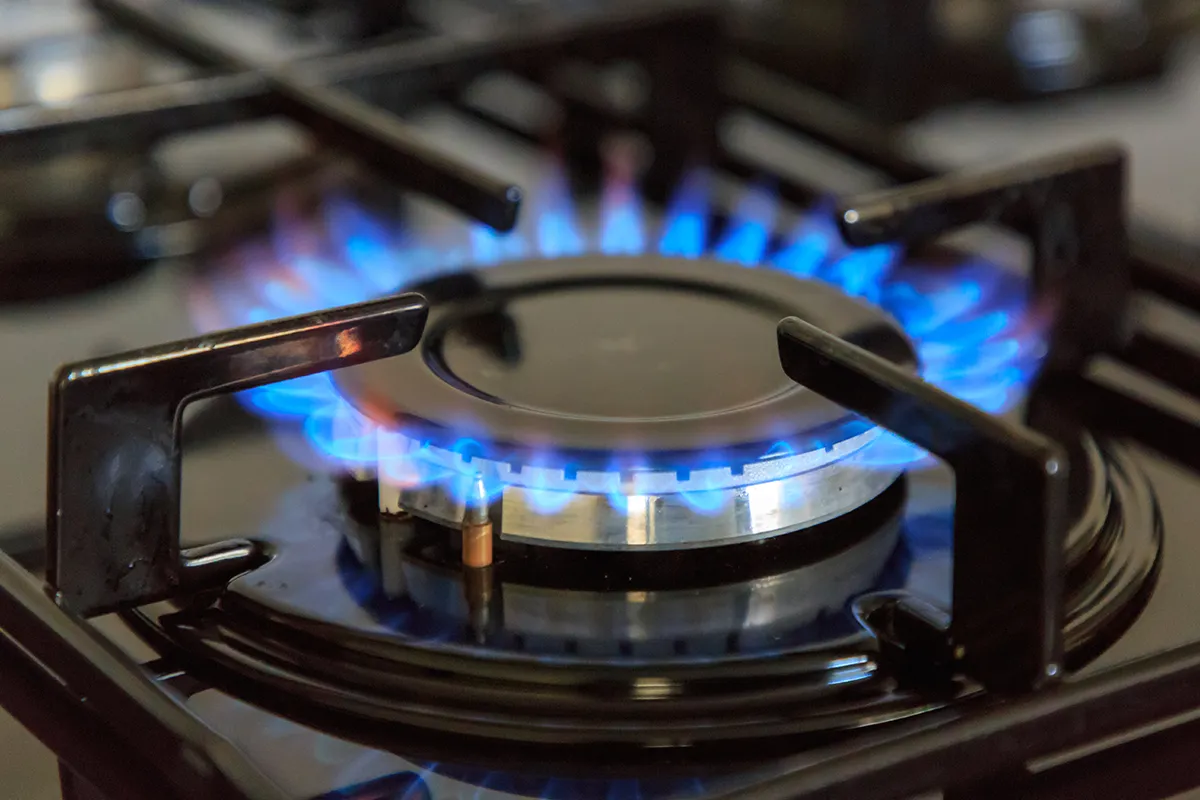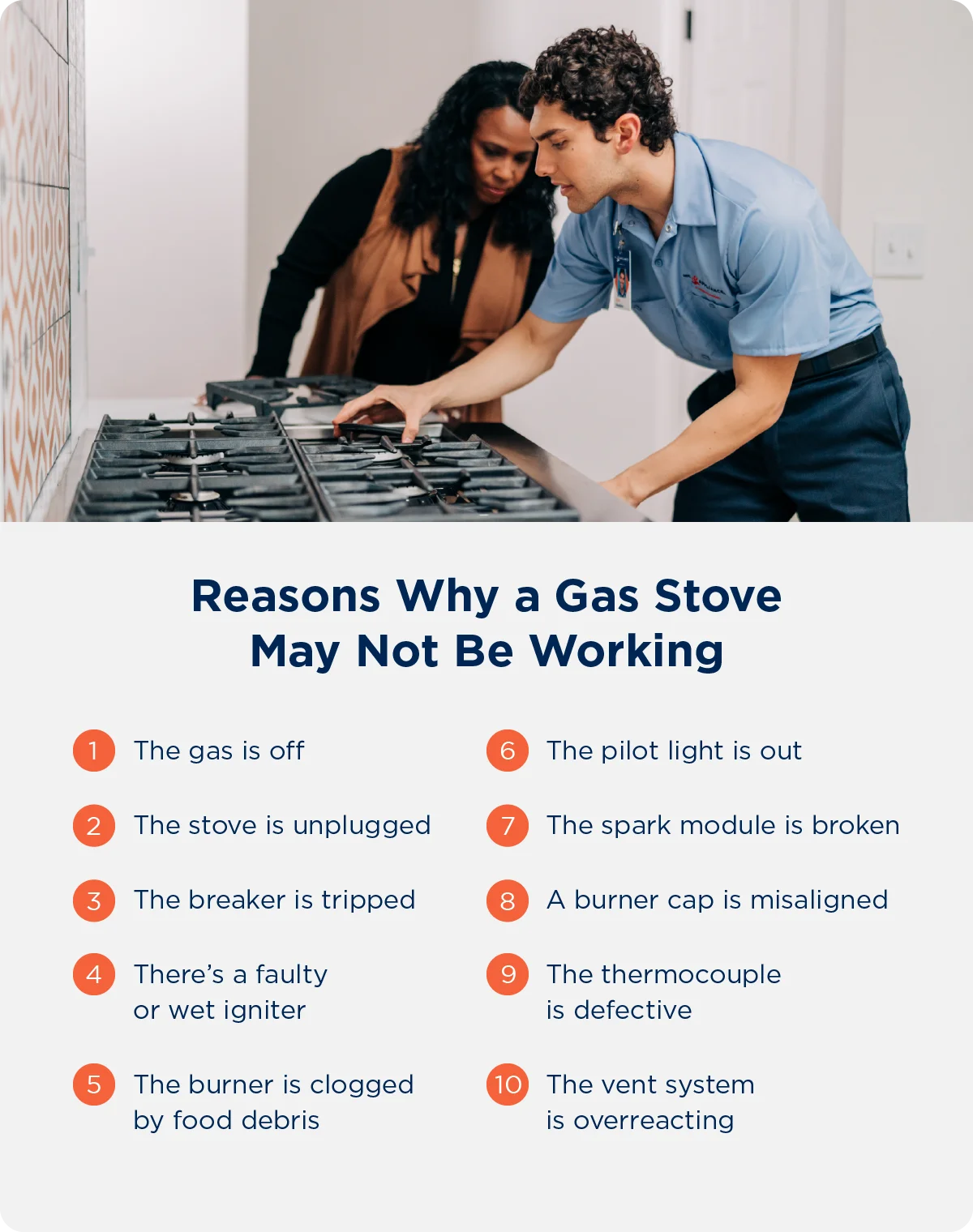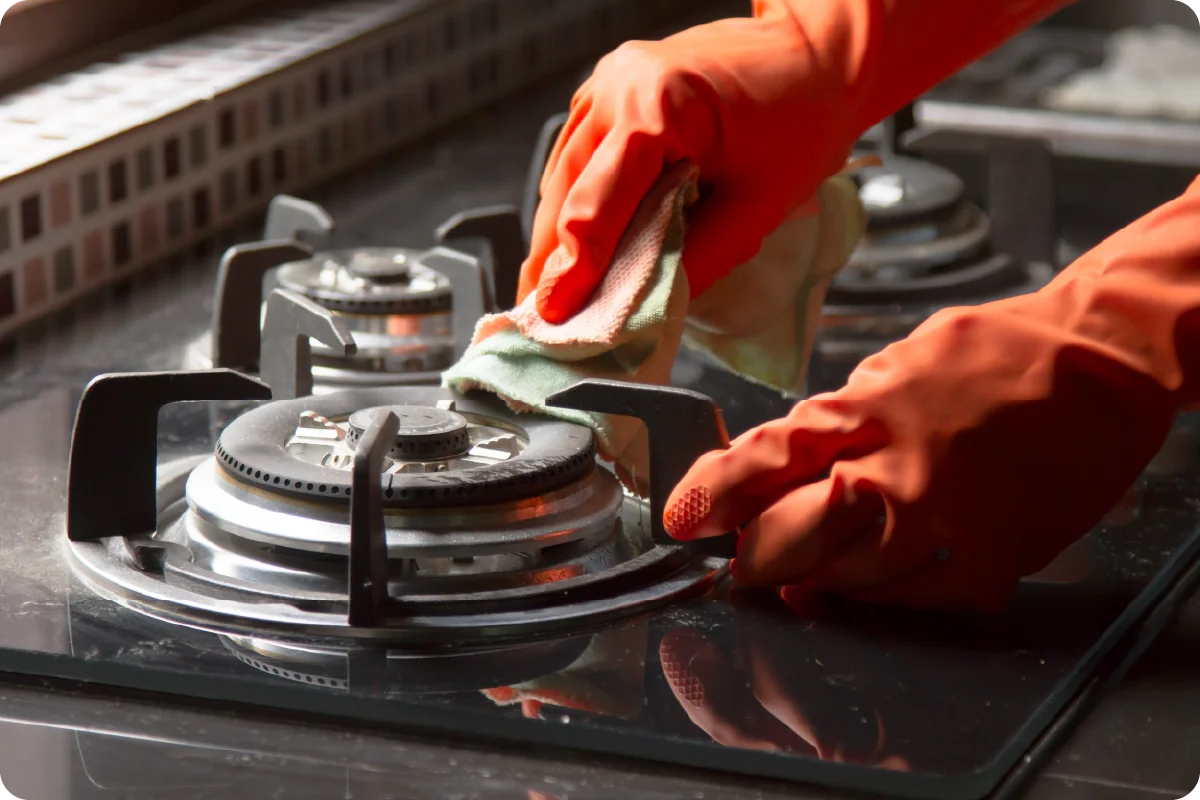Gas Stove Not Working?

Gas stoves are a popular choice among home and professional cooks, with 38% of Americans opting for gas over electric stoves. With their excellent temperature control and durability, gas stoves provide a consistent, reliable cooking option. But when your gas stove is not working properly, it can disrupt your day-to-day routine and cause major frustration.
The good news is that many of the reasons a gas stove stops working are easy to fix, either on your own or by a service professional. Continue reading to learn about some common gas stove issues — and how to fix them.
1. The Gas Is Off
If none of your burners will turn on, then the gas may be shut off. While it’s unlikely that the gas suddenly went off, someone in the household may have switched it off as a precaution, or if you just moved in, the previous tenants may have disconnected it.
How To Fix It: To check that the gas is on, look at the supply valve behind the stove. The valve handle should be in line with the gas line. If your gas stove is still not working after moving the valve to the open position, move on to other possible issues.
The Stove Is Unplugged
Similarly, the stove can be unplugged when moved or as a safety precaution, but it’s not likely the stove became unplugged on its own. Check with others in your household to see if there is a reason it may have been unplugged before proceeding to plug it back in.
How To Fix It: Once you ensure there’s no reason the stove is unplugged, check behind the stove to see if it’s plugged in and secure. If unplugged, reach behind and plug it back in snuggly to the outlet.
3. The Breaker Is Tripped
If your breaker was recently tripped due to a power outage, surge, or high electric usage, it may be the cause of your gas stove not working, particularly if your igniter is electric. In some homes, breakers trip frequently because of overloaded circuits.
How To Fix It: Reset the breaker by flipping the switch back to the proper position. If your breaker trips often, avoid using multiple high-energy appliances at the same time.
4. There’s a Faulty or Wet Igniter
If a burner on your gas stove is taking a little longer than usual to light, or the flame coming from the burner is more orange than blue, it could be the result of a wet or dirty igniter or burner. If you recently cleaned your stovetop, you may have gotten the igniter wet, which will prevent the gas from lighting instantly when you turn on the burner.
How To Fix It: Simply remove the burner cover and allow the igniter to air dry before trying to light the burner again. Once the igniter has dried completely, it should light the burner instantly when you turn it on.
5. The Burner Is Clogged by Food Debris
The flame on your gas stove should always burn blue, but a weak flame may appear yellow or orange. A yellow or orange flame indicates incomplete combustion, which can release carbon monoxide into your home. This happens when a burner is partially clogged, causing the level of the gas flowing into the burners to be reduced.
If you haven’t cleaned your stovetop in a while, grease and other cooking residue can build up and clog the burner and reduce the flow of gas. This can prevent the burner from producing a blue flame as soon as you turn it on.
How To Fix It: Remove the burner cover and use some warm water, soap, and a cleaning cloth to clean the area in and around the affected burner (a mixture of warm water and dish soap that contains a degreaser should break any built-up cooking residue).
While you’re at it, you might as well give all the burners a good cleaning to avoid the same issue later on. Once you’ve cleaned in and around all the burners, make sure they’re thoroughly dry to avoid leaving excess water on any of the igniters.
Pro Tip: Keep the burner covers off for 30-40 minutes after cleaning to allow the igniters to dry completely.

6. The Pilot Light Is Out
If the burners still don’t light after cleaning and inspecting the connection, the pilot light on your gas stove may be out. If your stove has an electric igniter and you recently lost power, you’ll need to reset the circuit breaker that supplies electricity to your stove.
How To Fix It: Reset the breaker and try lighting a burner. If the burner ignites, the problem is solved. If not, it’s best to call a service professional to diagnose the problem.
If your stove doesn’t have an electric igniter and you suspect the pilot light is out, don’t try to light or adjust the pilot light yourself. Turn the gas off to your stove and call a trained service professional to get your stove back up and running. Use this opportunity to have an appliance expert perform a thorough maintenance check on your stove and oven to ensure everything is working properly.
7. The Spark Module Is Broken
The spark module provides power to the igniter, which lights the stove. When it’s broken or not functioning properly, you probably won’t hear the stove clicking and have no spark. The spark module may malfunction for several reasons.
How To Fix It: The spark module will need to be replaced by an appliance service professional.
8. A Burner Cap Is Misaligned
Another possible cause for a burner not lighting is a misaligned burner cap. If the burner cap isn’t properly aligned, the burner will not ignite. This often happens after the stove is cleaned and the burner cap is accidentally put back in the wrong position.
How To Fix It: Check the burner cap alignment after cleaning. If the cap is properly aligned and the burner is clean but it’s still not lighting, then it’s time to call in a professional to diagnose the problem.
9. The Thermocouple Is Defective
The thermocouple is responsible for sensing the flame of a gas stove. When it is defective, the stove may still start like normal but will then go off once you release the knob. The thermocouple may have just worn out over time or been damaged.
How To Fix It: The thermocouple can be replaced relatively easily. If you prefer to avoid the hassle of DIY, contact your local Mr. Appliance’s service professionals to have them replace the thermocouple for you.
10. The Vent System Is Overreacting
If a burner on your gas stove lights easily but then goes out, it may be caused by your stove vent. A vent system can affect the stability of the flame coming from the burners and cause the flame to be extinguished.
How To Fix It: If you suspect the vent is the cause, either decrease the speed of the blower or increase the burner setting. If neither of these adjustments solves the problem, call a trained service professional to diagnose and resolve the issue.
Gas Stove Not Working FAQ
Our experts have answers to some commonly asked questions about why your gas stove may not be working.
Why Would a Gas Stove Stop Working?
There are many reasons why a gas stove would stop working, such as the gas or power going out, food debris clogging the igniter, or a broken spark module. Schedule a service professional to assess your gas stove.
Why Won’t My Gas Stove Ignite?
Problems with a gas stove igniting can be caused by issues with the igniter or spark module or a misaligned burner cap.
How Do I Know If My Gas Stove Is Broken?
Signs that your gas stove is not working properly include smelling gas, the burners not lighting, strange noises, poor temperature control, or the flame color changing to red, yellow, or orange rather than blue.
When to Call In the Professionals for Gas Stove Repairs
The reason a gas stove stops working can be simple or complex. Simple problems like a wet igniter switch or misaligned burner cap can usually be handled on your own. Even cleaning a partially or completely clogged burner can be handled on your own if you’re careful. But it’s important to remember that your gas stove can release carbon monoxide, which is a poisonous, lethal gas. So, if you smell gas or have a problem with your stove that’s too complicated to fix by yourself, contact a professional who’s trained to assess and resolve the issue.
The experts at your local Mr. Appliance are experienced and trained to diagnose and fix your gas stove problems, so contact us today to schedule an appointment.
This article is intended for general guidance only and may not be applicable to every situation. You are responsible for determining the proper course of action for your property and your situation. Mr. Appliance is not responsible for any damages that occur as a result of any advice or guidance derived from blog content. For the most accurate guidance, contact an independently owned and operated Mr. Appliance business for a professional custom and on-site assessment.
 Click to call
Click to call



